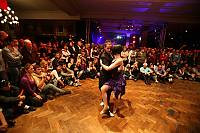
© 2008, by Ministerio de Cultura Ciudad de Buenos Aires
Tango (2009)
The Argentinian and Uruguayan tradition of the Tango, now familiar around the world, was developed by the urban lower classes in Buenos Aires and Montevideo in the Rio de la Plata basin. Among this mix of European immigrants to the region, descendents of African slaves and the natives of the region known as criollos, a wide range of customs, beliefs and rituals were merged and transformed into a distinctive cultural identity. As one of the most recognizable embodiments of that identity, the music, dance and poetry of tango both embodies and encourages diversity and cultural dialogue. Read more…
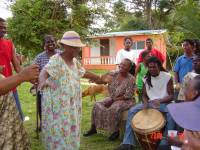
© National Garifuna Council
Language, dance and music of the Garifuna (2008)
A population of mixed origin incorporating cultural elements of indigenous Caribbean and African groups, the Garifuna settled along the Atlantic coast of Central America after being forced to flee from the Caribbean island of Saint Vincent in the eighteenth century. Today, Garifuna communities mainly live in Honduras, Guatemala, Nicaragua and Belize. The Garifuna language belongs to the Arawakan group of languages and has survived centuries of discrimination and linguistic domination. Read more…

© Luiz Santoz/UNESCO
Samba de Roda of the Recôncavo of Bahia (2008)
The Samba de Roda, which involves music, dance and poetry, is a popular festive event that developed in the State of Bahia, in the region of Recôncavo during the seventeenth century. It drew heavily on the dances and cultural traditions of the region’s African slaves. The performance also included elements of Portuguese culture, such as language, poetry, and certain musical instruments. Read more…
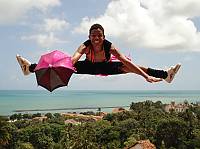
© Acervo PCR, 2006
Frevo, performing arts of the Carnival of Recife (2012)
Frevo is a Brazilian artistic expression comprising music and dance, performed mainly during the Carnival of Recife. Its quick frenetic and vigorous rhythm draws upon the fusion of musical genres such as marching music, Brazilian tango, square dance, polka and pieces of classical repertoire, performed by martial bands and fanfares. The music is essentially urban, and like the accompanying dance, ‘Passo’, is vigorous and subversive. The dance stems from the skill and agility of capoeira fighters, who improvise leaps to the electrifying sound of steel orchestras and bands.Read more…
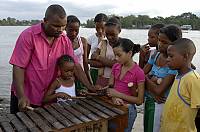
Marimba music and traditional chants from Colombia’s South Pacific region (2010)
Marimba music and traditional chants of Colombia’s South Pacific region are the heritage of Afro-Colombian groups in the departments of Valle del Cauca, Cauca and Nariño. Chanting by women and men (cantadoras and chureadores) blends with acoustic instruments, handcrafted using local materials: palm-wood Marimbas, wooden and leather bass and hand drums, and bamboo and seed rattles. This music is performed principally during four rituals: Arrullo, Currulao, Chigualo and Alabao. Read more…
Cocolo dance drama tradition (2008)
The Cocolo dancing drama tradition developed among descendants of British Caribbean slaves who had come to the Dominican Republic in the mid-nineteenth century to work in the sugar fields. This linguistically and culturally distinct community set up their own churches, schools, benevolent societies and mutual assistance lodges. Their most distinctive expressions, however, were annual dancing drama performances. Originally pejorative, the term “Cocolo”, which refers to the migrants working on the British sugar plantation of the island, is now used proudly. Read more…
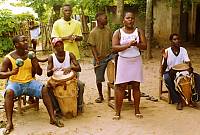
© Ministry of Culture of republic of Colombia
Cultural space of Palenque de San Basilio (2008)
The village of Palenque de San Basilio, with a population of about 3,500 inhabitants, is located in the foothills of the Montes de María, southeast of the regional capital, Cartagena. Palenque de San Basilio was one of the walled communities called palenques, which were founded by escaped slaves as a refuge in the seventeenth century. Of the many palenques that existed in former times, only San Basilio has survived until the present day. It developed into a unique cultural space. Read more…
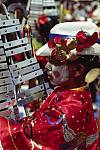
© Ministry of Culture of republic of Colombia
Carnival of Barranquilla (2008)
Every year during the four days before Lent, the Carnival de Barranquilla offers a repertory of dances and musical expressions originating from different Colombian sub-cultures. Because of its geographical location situated on the Caribbean coast and the commercial development during the colonial period, the city of Barranquilla became one of the country’s busiest trading centres and a place where European, African, and indigenous peoples and cultures converged. Read more…
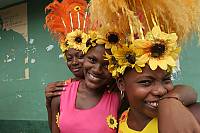
© León Dario Peláez, 2005
Festival of Saint Francis of Assisi, Quibdó (2012)
Every September and October the twelve Franciscan districts of Quibdó hold the Fiesta de San Pacho, a religious celebration of the community’s Afro-Colombian Chocó identity. It begins with a Catholic ‘inaugural mass’ that incorporates traditional dances and music on the chirimía, an oboe-like instrument. A carnival parade follows, with floats, costumes, dances and chirimía. Masses are celebrated in the morning, with floats and carnival groups in the afternoon. Towards the end, the patron saint travels down the Atrato River and people celebrate the dawn with devotional hymns and perform the Grand Procession of the Saint. Read more…

© UNESCO/Montserrat Martell Domingo
La Tumba Francesa (2008)
The dance, song and drumming style known as Tumba Francesa (French Drum) was brought to Cuba by Haitian slaves who were resettled in the island’s eastern regions following the unrest in Haiti during the 1790s. It embodies one of the oldest and most tangible links to the Afro-Haitian heritage of Cuba’s Oriente province and developed from an eighteenth- century fusion of music from Dahomey in West Africa and traditional French dances. After Cuba’s abolition of slavery in 1886 and the resulting migration of former slaves to urban areas in search of work, Tumba Francesa societies emerged in several cities. Read more…
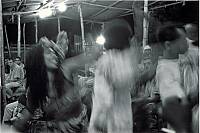
© Savignan RP, 2001
Maloya (2009)
Maloya is a form of music, song and dance native to Réunion Island. Of mixed racial origins since its outset, maloya was created by Malagasy and African slaves on the sugar plantations and was eventually appropriated by the whole of the island’s population. Initially conceived as a dialogue between a soloist and a choir accompanied by percussion instruments, maloya exists today in an increasing variety of forms, both in terms of texts and instruments (the introduction of djembes, synthesizers, drums, etc.). Sung and danced on stage by professional or semi-professional artists, it is mixed with rock, reggae or jazz and inspires poetry and slam. Read more…

© The Institut of Jamaïca
Maroon heritage of Moore Town (2008)
Situated in the highlands of eastern Jamaica, Moore Town is home to the descendants of independent communities of former runaway slaves known as Maroons. The African ancestors of the Moore Town Maroons were forcibly removed from their native lands to the Caribbean by Spanish slave traders in the sixteenth and seventeenth centuries. The term Maroon, derived from the Spanish word cimarrón (wild), refers to those slaves who fled the plantations in the early 1600s and established their own settlements in the Blue and Johncrow Mountains of eastern Jamaica. Read more…
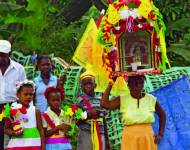
© Museo de Hombre Dominicano
Cultural space of the Brotherhood of the Holy Spirit of the Congos of Villa Mella (2008)
The Brotherhood of the Holy Spirit of the Congos of Villa Mella is distinguished in the fields of music, dance and popular festivities. The Brotherhood musicians play instruments called Congos. These Congos, the origin of which is attributed to the Holy Spirit, are hand-drums. The Brotherhood, which is nowadays open to all without distinction of sex or origin, was founded in the sixteenth century by African slaves and people of mixed origin. For historical reasons, the Brotherhood is an important part of the cultural identity of its members and of the region as a whole. The Festival of the Holy Spirit, celebrated at Pentecost, features prayers, dances and singing, accompanied by the music of the Congos and a procession carrying the dove representing the Holy Spirit. Read more…
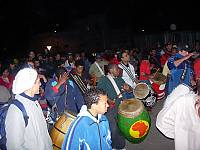
© 2008, by Goldman
Candombe and its socio-cultural space: a community practice (2009)
Every Sunday and on many holidays, the llamadas de tambores de candombe or candombe drum calls enliven the Sur, Palermo and Cordón districts in southern Montevideo, Uruguay, home to a population of African descent. The practice of the candombe begins around communal fires as people gather to tune their drums and socialize before beginning their march. Once underway, the drum-call parade is led by the most prestigious members, from families recognized by the community for their drumming for many generations; other drummers are organized behind them in rows, and informal participants, dancers and spectators march alongside or watch from balconies. Read more…